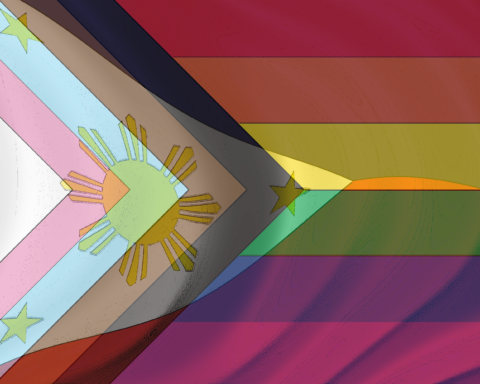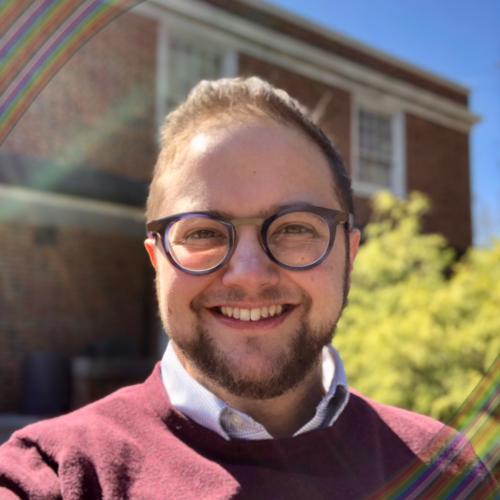Halloween and Christmas have a lot in common. Both started as pagan traditions appropriated by Christians and adopted into the liturgical calendar. Halloween as “All Hallows’ Eve” was originally celebrated the day before All Saints’ Day to remember the dead. Christmas as the “Christ Mass” of course celebrates the birth of Christ and in him the promise of everlasting life. There’s a fascinating tension (a theologian might even say a “dialectic”) between remembering the passing away of every soul and then a few months later celebrating the birth of one special person.
There’s a fascinating tension (a theologian might even say a “dialectic”) between remembering the passing away of every soul and then a few months later celebrating the birth of one special person.
This tension is intensified by the way we think about these holidays in cultural terms. Christmas remains the last Christian holiday that is not a workday for many in the United States and beyond. It remains one of the only times many people attend church. Although there is certainly a significant commercial dimension to Christmas, in many ways it is the last bastion of religious observance for many people. On the other hand, Halloween has become entirely secular in American culture and some concerned Christians even see it as a day to worship the Devil. Christmas is spent reminiscing with your family over milk and cookies left for Saint Nicholas while in contrast Halloween is spent dressed in sexy costumes and drinking adult beverages shared among friends surrounded with images of the underworld of goblins, ghouls, and ghosts.
It is out of these differences that Halloween has become known as “Gay Christmas” for many in the queer community. For queer people who do not feel safe at home or even feel like they can entirely be themselves at home, their most significant relationships may be in queer friendships, a found family in contrast to a biological one that the queer community provides. The homey white-picket fence lifestyle may feel like a drag (and not the fun kind!). Growing up, Halloween can easily become a favorite holiday for queer people as crossdressing is often only socially acceptable at a Halloween party in straight settings.
For queer people who do not feel safe at home or even feel like they can entirely be themselves at home, their most significant relationships may be in queer friendships, a found family in contrast to a biological one that the queer community provides.
For many queer people, “Gay Christmas” is the biggest night of the year and the last big party before the traditional, familial settings of Thanksgiving and Christmas provoke situations of loneliness, awkward questions, and for many going back into the closet when they return home. By synthesizing the spirit of Halloween with the importance of Christmas, Gay Christmas functions as a resolution to that tension between these holidays, a synthesis to the contradiction in other words. I think celebrating Gay Christmas rather than an act of demonic blasphemy or profane irreverence, is actually an act of subversive, spiritual resistance to the parts of Christmas that get in the way for many queer people to see Christ. There’s a lot more to Jesus than the nuclear family’s Christmas dinner.
For many queer people, “Gay Christmas” is the biggest night of the year and the last big party before the traditional, familial settings of Thanksgiving and Christmas provoke situations of loneliness, awkward questions, and for many going back into the closet when they return home.
Mary and Joseph bearing the shame of having a child out of wedlock are likely turned away not by a hotel manager but considering homes were owned by families, they were likely told there “wasn’t enough room” by someone in their extended family. This is not unlike the rejection many queer people feel at traditional Christmas. In a Halloweenesque fashion, they go door to door, looking for a place to stay. When they finally find a community they are surrounded by immaculately dressed (drag) kings from faraway lands, lowly night-shift shepherds, and a barnyard cast of animals that constitute an abnormal found family present for the birth of Christ. Sounds like a queer Halloween party to me. I can even imagine that in the incarnation of God as a human being, it could even feel a little bit like putting on a costume. In this way, the first Christmas was a lot more like “Gay Christmas” than the familial celebration so central to the mainstream commemoration on December 25th.
In a Halloweenesque fashion, they go door to door, looking for a place to stay. When they finally find a community they are surrounded by immaculately dressed (drag) kings from faraway lands, lowly night-shift shepherds, and a barnyard cast of animals that constitute an abnormal found family present for the birth of Christ.
Seeing Halloween as Gay Christmas has a lot to teach us all about how we think about queer inclusion in our churches. It is not enough to say we are inclusive by putting up rainbow flags and making vision statements. We need to continually renvision and reimagine what it means to be the Church. Halloween invites us to lean into the promise of new life in the present moment by engaging our imaginations by experimenting with our identity. Halloween invites us to even go as far as being explicitly deceptive with our costumes. Halloween is a time for play amid the incoming stress. Churches overwhelmed by declining membership and often fraught internal dynamics should learn from the queer community by embracing the macabre and messing around with our identity to discover new modes of connection and self-acceptance.
Churches overwhelmed by declining membership and often fraught internal dynamics should learn from the queer community by embracing the macabre and messing around with our identity to discover new modes of connection and self-acceptance.
Churches should strive to be places less about finding your Sunday best to dress for the cross and embrace this kind of “cross-dressing” by prayerfully reflecting about what the transformation of new life means to be part of the found family of Jesus. In this annual flurry of fabulous costumes and fierce makeup choices, queer people find an unexpected family when the biological family of Christmas too often just doesn’t get it. Halloween reminds us, like that first Christmas did, that often the model for a healthy community isn’t always the connections forged by biological reproduction in family units but coming together to be vulnerable and seeing what costume fits us best. Our church families should strive to learn to model the kind of solidarity found in queer community.
The point is not to merely appropriate queer language and aesthetics into worship spaces. We cannot queer the institution of the capital-C Church by writing liturgies of queer revolution to read out loud each and every week. The beauty of ritual is powerful, but when subversive power is put into organized ritual the subversiveness is lost in its regularity. Ritual and regularity should be important aspects of Christian life, gay and straight alike, the point is not to be defiant and indecent all the time. We all deserve to be comfortable and feel safety and stability. For some of us, the rainbow picket fence is a worthy aspiration. Church should be a place where we can feel comfortable and even “normal” but the tricky part is interrogating the question of “normal” for who?
For some of us, the rainbow picket fence is a worthy aspiration. Church should be a place where we can feel comfortable and even “normal” but the tricky part is interrogating the question of “normal” for who?
Glitter on a bearded face, tough conversations about pronouns, gender expressions that confuse, and sexual orientations that seemingly contradict, queer modes of being that may cause discomfort. But this discomfort, like giving birth in a manger, is the very grounds to begin to understand the beauty in abnormality that the queer experience conveys. Abnormality is the grounds for found family on Gay Christmas. The church does not need to be a site of constant subversion, but rather this attitude of embracing abnormality is what churches need. The point is not to try to turn the church into a gay bar, but rather to model the attitude of being open to defiant and different normalities, what may seem abnormal to many, and to realize this is the reason for the season of Gay Christmas. Like a crying baby during a sermon, what might first evoke feelings of discomfort, upon reflection reveals to be a beautiful thing: new life in God’s Creation in the same miraculous way as God came to us on Christmas morning.

Rosa Ross (she/her) is the Presbyterian campus ministry fellow at The College of New Jersey and an adjunct professor of religious studies at Marshall University.






Unbound Social